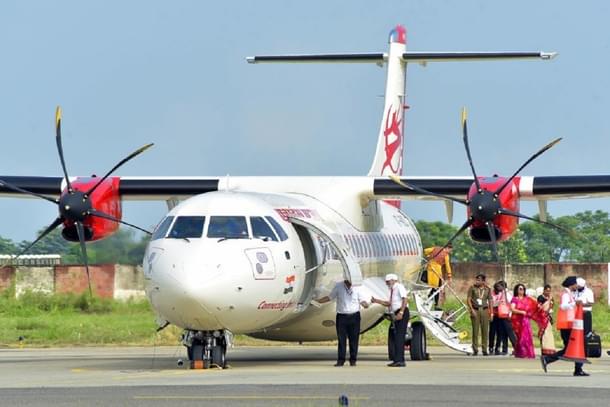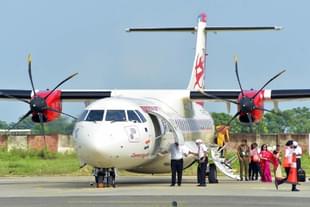Infrastructure
Ude Desh Ke Aam Nagrik (UDAN): Over 130 Lakh Passengers Have Availed Benefits Of Scheme So Far; Rs 1,000 Crore Allocated For Phase-2
Arun Kumar Das
Dec 05, 2023, 10:13 AM | Updated 10:13 AM IST
Save & read from anywhere!
Bookmark stories for easy access on any device or the Swarajya app.


Over 130 lakh people have availed the benefits of the Regional Connectivity Scheme-UDAN, that seeks to stimulate regional air connectivity at affordable rates for the masses, so far.
The scheme envisages providing connectivity to unserved and underserved airports of the country through revival of the existing airstrips and airports.
In operation for a period of ten years, the salient features of the Regional Connectivity Scheme (RCS)-Ude Desh ka Aam Nagrik (UDAN) scheme are as under:
UDAN is designed to enable air operations on underserved/unserved routes connecting regional areas, promote balanced regional growth and make flying affordable for masses.
Financial incentives in terms of concessions from central, state governments and airport operators are extended to selected airline operators to encourage operations from unserved/underserved airports/heliports/water aerodromes and to keep the air fare affordable.
Financial support is provided to the selected airline operators in the form of viability gap funding (VGF). State governments provide 20 per cent share towards VGF for UDAN flights pertaining to their states. However, the share of VGF for north-eastern states and the union territories is 10 per cent.
Airlines are required to commit certain number of the seats as RCS seats depending on the type and size of aircraft on RCS flights.
Regional Connectivity Fund is created by a levy on each departure of flights on aircraft having 'maximum take-off weight' above 40 tonnes except for the departure of flights on routes in North East Region, Himachal Pradesh, Uttarakhand, union territories of Jammu and Kashmir, Ladakh, Andaman and Nicobar Islands and Lakshadweep Islands.
For balanced regional growth, route allocations are spread equitably across five regions in the country — North, South, East, West and North East (with a cap of 30 per cent in a given region).
RCS-UDAN is a market driven scheme. Interested airlines, based on their assessment of demand on particular routes, submit proposals at the time of bidding under the scheme.
The scheme will be applicable for a period of 10 years, subjected to periodic review. VGF support for the RCS route is available for a period of three years only.
The scheme allows operation through various type of aircraft, including sea planes and helicopters. A valid scheduled operator permit or a scheduled commuter operator permit for scheduled air transport service (passenger) issued by the DGCA is required for eligible operators.
Rs 4,500 crore has been allocated for development of airports in the country under the scheme, out of which Rs 3,751 crore has been utilised since inception of the scheme. VGF amounting to Rs 3,020 crore has been disbursed to the selected airline operators as of 28 November, 2023.
Out of Rs 97.88 crore sanctioned to develop the airports in the state of Tamil Nadu, an expenditure of Rs 94.51 crore has been incurred so far.
Under the UDAN scheme, the government has set a target to operationalise 1,000 UDAN routes and to revive/develop 100 unserved and underserved airports/heliports/water aerodromes in the country by 2024.
517 RCS routes have so far commenced operations connecting 76 airports, including nine heliports and two water aerodromes. More than 130 lakh people have availed of the benefits of the scheme so far.
An amount of Rs 1,000 crore has been allocated under Phase II of the scheme during the period 2023-26 for development and operationalisation of 50 new airports/heliports/water aerodromes in the country, including Tamil Nadu.





